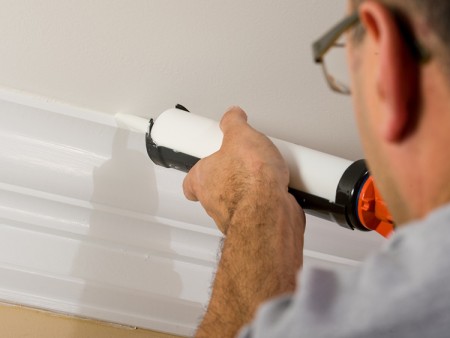CHNGOO Ethan, 6th,December,2023
In the expansive world of construction and DIY projects, the significance of silicone sealants cannot be overstated. These versatile compounds, known for their exceptional adhesive properties, have become go-to solutions for sealing and bonding various materials. As we embark on a journey through the intricacies of silicone sealants, this essay aims to shed light on critical distinctions that influence the choice of sealant for specific applications. From discerning the best sealant for silicone to unraveling the differences between silicone sealant and general sealants, exploring the variations within 100% silicone formulations, and demystifying the nuances between 100% silicone and 100% RTV silicone, this exploration seeks to empower individuals with the knowledge needed to make informed decisions. Additionally, we will delve into the question: Is translucent silicone the same as clear silicone? By the end of this essay, readers will gain a comprehensive understanding of the diverse landscape of silicone sealants and their implications in construction and DIY projects.

What is the best sealant for silicone?
Determining the best sealant for silicone involves a nuanced understanding of specific project requirements. The term "best" is context-dependent and relies on factors such as adhesion strength, flexibility, curing time, and environmental resistance. For general-purpose applications, acetoxy cure silicone sealants are often preferred due to their ease of use and rapid curing properties. In situations where potential corrosion of metals is a concern, neutral cure silicone sealants become the top choice. High-performance scenarios, such as those demanding robust adhesion and durability, call for structural silicone sealants. The "best" sealant is contingent upon aligning the sealant's properties with the unique demands of the project.

What is the difference between silicone sealant and sealant?
The term "sealant" encompasses a broad category of compounds designed to create a barrier against the penetration of air, water, or contaminants. Silicone sealant, a specific type within this category, stands out due to its composition primarily derived from silicone polymers. Unlike general sealants that may be based on acrylics, polyurethanes, or other materials, silicone sealants offer distinct advantages. These include high flexibility, resistance to UV radiation, and excellent adhesion to various surfaces. While silicone sealants fall under the umbrella of sealants, their unique properties make them a preferred choice in many applications, especially where longevity and versatility are paramount.

Are all 100% silicone sealants the same?
The designation "100% silicone" refers to the purity of the silicone polymer used in the sealant, indicating the absence of additives or fillers. However, not all 100% silicone sealants are identical. Premium-grade 100% silicone sealants often incorporate additives to enhance specific properties, such as UV resistance, adhesion, or flexibility. It is crucial to consider the intended application and the unique features of each product to determine the most suitable 100% silicone sealant for a given project. The devil lies in the details, and understanding these nuances ensures that the selected sealant aligns perfectly with the project's demands.
![]()
What is the difference between 100% silicone and 100% RTV Silicone?
The terms "100% silicone" and "100% RTV silicone" are sometimes used interchangeably, causing confusion. RTV stands for "Room Temperature Vulcanizing," indicating that the silicone cures at room temperature without requiring additional heat. Therefore, all 100% RTV silicones are 100% silicone, but not all 100% silicone sealants are necessarily 100% RTV. The distinction lies in the curing process. 100% RTV silicone sealants cure by reacting with moisture in the air, creating a durable and flexible seal. This makes them suitable for a wide range of applications, from household repairs to industrial settings. Understanding this difference is crucial when selecting a silicone sealant to ensure compatibility with the project's requirements.

Is translucent silicone the same as clear silicone?
The terms "translucent" and "clear" are often used interchangeably, but they do have subtle differences. Translucent silicone allows light to pass through but diffuses it, creating a softer, more muted appearance. Clear silicone, on the other hand, is optically clear, providing a transparent and unobstructed view. The distinction is crucial in applications where visual aesthetics matter, such as in glass bonding or artistic projects. Understanding this subtlety ensures that the selected silicone sealant aligns with the desired visual outcome of the project.

Conclusion:
Silicone sealants, with their diverse formulations and applications, represent a cornerstone in modern construction and DIY projects. The quest for the best sealant for silicone prompts a nuanced evaluation of specific needs and project requirements. Understanding the distinctions between silicone sealants and general sealants clarifies the unique role that silicone plays in this expansive category. The purity of 100% silicone is a hallmark of quality, but the variations within formulations emphasize the need for a discerning eye when selecting the ideal sealant. The differentiation between 100% silicone and 100% RTV silicone underscores the importance of comprehending curing processes for optimal results. Finally, discerning between translucent and clear silicone ensures that the visual outcome aligns seamlessly with project expectations.
In navigating the spectrum of silicone sealants, knowledge becomes the compass guiding us through a sea of options. Armed with this understanding, individuals can confidently embark on their sealing and bonding endeavors, choosing the right silicone sealant for the task at hand. As silicone technology continues to advance, so too does our ability to create enduring bonds, fortifying structures and projects with the resilience that only silicone sealants can provide. This exploration, rich with insights into the diverse landscape of silicone sealants, equips readers with the tools needed to navigate the complexities of the construction and DIY world.